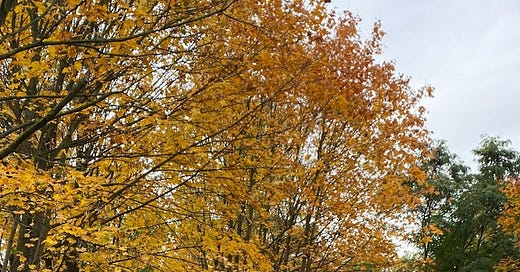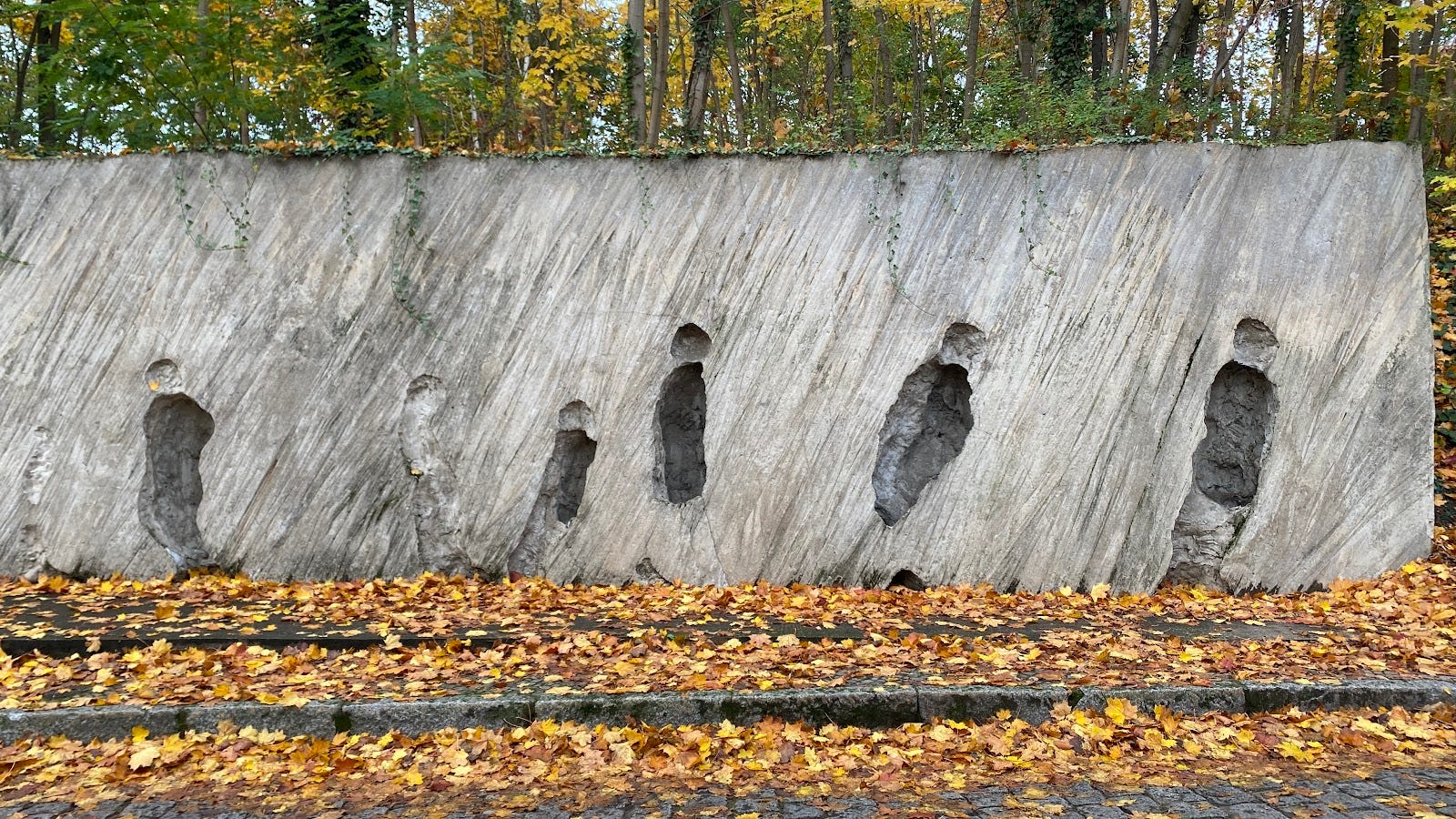“This history jumps out at you, in very deliberate ways (...) but also in unexpected ways.” — Dr. Leslie M. Harris
During our meetings in Berlin last March, members of the Hard Histories research team Martha S. Jones, Lauren Feldman and myself, Malaurie Pilatte, along with our fellow travelers — Ariela Gross, Leslie M. Harris, Jean Hébrard, Ben Gerstein, Hélène Quanquin, and Jakob Vogel — spent time walking around the city to learn from and observe concrete markers of history, as well as monuments.
On the second day of our three day workshop, we headed out to the Brandenburg Gate to meet the guides who would be leading us in an exploration of Nazi-era Berlin. The walking tours allowed workshop participants to get a sense of the geography of Berlin, while encountering firsthand the variety of the landscape of monuments and memorials to the Second World War and the postwar era in the German capital. As Dr. Leslie Harris reminded us during her conversation with Martha S. Jones and Ariela Gross, “Live from Berlin: A Webinar”: “This history jumps out at you, either in very deliberate ways that it has been set up for, for reflection and for ‘the jolt,’ but also in unexpected ways.”
During our tour, Context Travel guides showed us through the Brandenburg Gate, The Memorial to the Murdered Jews of Europe, the Memorial to the Persecuted Homosexuals under National Socialism, as well as the Reich Main Security Office and the former headquarters of the Luftwaffe. We learned about the creative decisions that went into the design of these monuments to some of Germany’s hard histories, their controversies, the choice of their location, as well as the message attached to them. Unsurprisingly, monuments as physical embodiments of memory and history, are always the site of debates. We also witnessed the absence of a monument at the site of Hitler’s Bunker, where a plaque now stands, retelling the last days of the War.
We learned how the choice of location matters to the building of monuments. The Memorial to Gay, Lesbian and Transgender victims of the Nazi regime, opened in 2008, is located in the Tiergarten, in an area that was central to the lives of LGBT+ people in the 1920s. A few hundred feet from the memorial, Magnus Hirschfeld’s Institute for Sexual Science once stood. Hirschfeld was an early defender of transgender people, and his institute provided many with the care they needed in the 1920s before he was targeted by the Nazi regime and forced to flee Germany. Bringing us back to Baltimore, Martha S. Jones provided her own reflections on the contested meaning of monuments in our third roundtable of the week, “Finding Hard Histories in the Archive.” Jones shared her thoughts on Roger B. Taney and the monument to him in Baltimore that was removed in 2018 in a piece titled “Whose Hard History is This? Or, Why I Miss the Roger B. Taney Monument.”
On our third and final day in Berlin, we learned about the history of the Grunewald neighborhood, where the host for our meetings, the Wissenschaftskolleg, is located. Dr. Petra Fritsche guided us through the neighborhood that had once been the home of some of Berlin’s Jewish upper-classes. She explained that the Jewish families once residing in the neighborhood were dispossessed in the days leading up to the War. After the War, the buildings in possession of the German state were restituted to family and in the case of the Wissenschaftskolleg zu Berlin, our host for the week, eventually passed on to various institutes of higher learning.
The history of the Grunewald neighborhood, as in many areas of Berlin, is a painful one. But it is less monumental. We witnessed street names that had been changed, to reflect the contributions of resistance fighters, as well as stumbling stones placed at the door of several houses, to memorialize the Jewish families that had once lived there. The brass stones require attention. They only shine when polished -- one must stop and get on their knees to do so. The stones thus represent a form of active memory. The train station in Grunewald is another. It was used during World War Two to transport German jews to concentration camps. Now, upon those train tracks, trees have grown, symbolizing the fact that they will never be used again.
Along the tracks is the “Platform 17 Memorial.” Steel plates document each departure, the number of victims, and their destination. An art installation was also carved in the stone adjacent to the train tracks, to represent the walk of the victims of the Holocaust.
Going back to Dr. Harris’s remark, I was struck by the ways that the history of World War Two, the Holocaust and the partition of postwar Germany jumped out at me in Berlin. Next to Platform 17, the present-day S-Bahn train station now stands, where commuters travel morning and night to various locations in Berlin and beyond. Installations like the Topography of Terror, where fragments of the Berlin Wall still stand, blend into the urban landscape which reminds you constantly that you walk among the remains and ruins of some of the 20th century’s hardest histories. Where history has been paved over or buildings rebuilt, memorials and monuments provide a deliberate, planned, and intentional reminder, as well as an invitation to pause and reflect. But some of the reminders -- street names, bus stops, stumbling stones -- are unexpected, and less than monumental. Young trees around the city provide another reminder -- following the bombing of the German capital during the war, almost every tree in Berlin had to be replanted. Other hard histories are just now beginning to be reckoned with and made visible. As we learned from our German colleagues, the legacies of slavery and colonialism in Germany are now at the heart of various institutional and public history projects.
I wondered how Johns Hopkins might be able to apply some of these “monumental” lessons from Berlin to its own reckoning of history. Members of the research lab at Hard Histories have begun sketching answers to these questions: How might we best build urban markers and memorials to the victims of slavery and racism embedded in the founding of our University? What might a monument to the girls resident in the Johns Hopkins Hospital “Orphan Asylum” look like? Could the adjacent streets be named after them? And what of the ones whose names were stripped from them and erased by the archival record?
In our next post, I will share what we learned about memory during our meetings in Berlin and Paris, starting with our visit to the Humboldt Forum, a museum recently built amid controversy. As the curatorial team at the Forum shared with us in a very special private tour, the museum stands as an important embodiment of the contest over monuments, place and memory.
-- Malaurie





